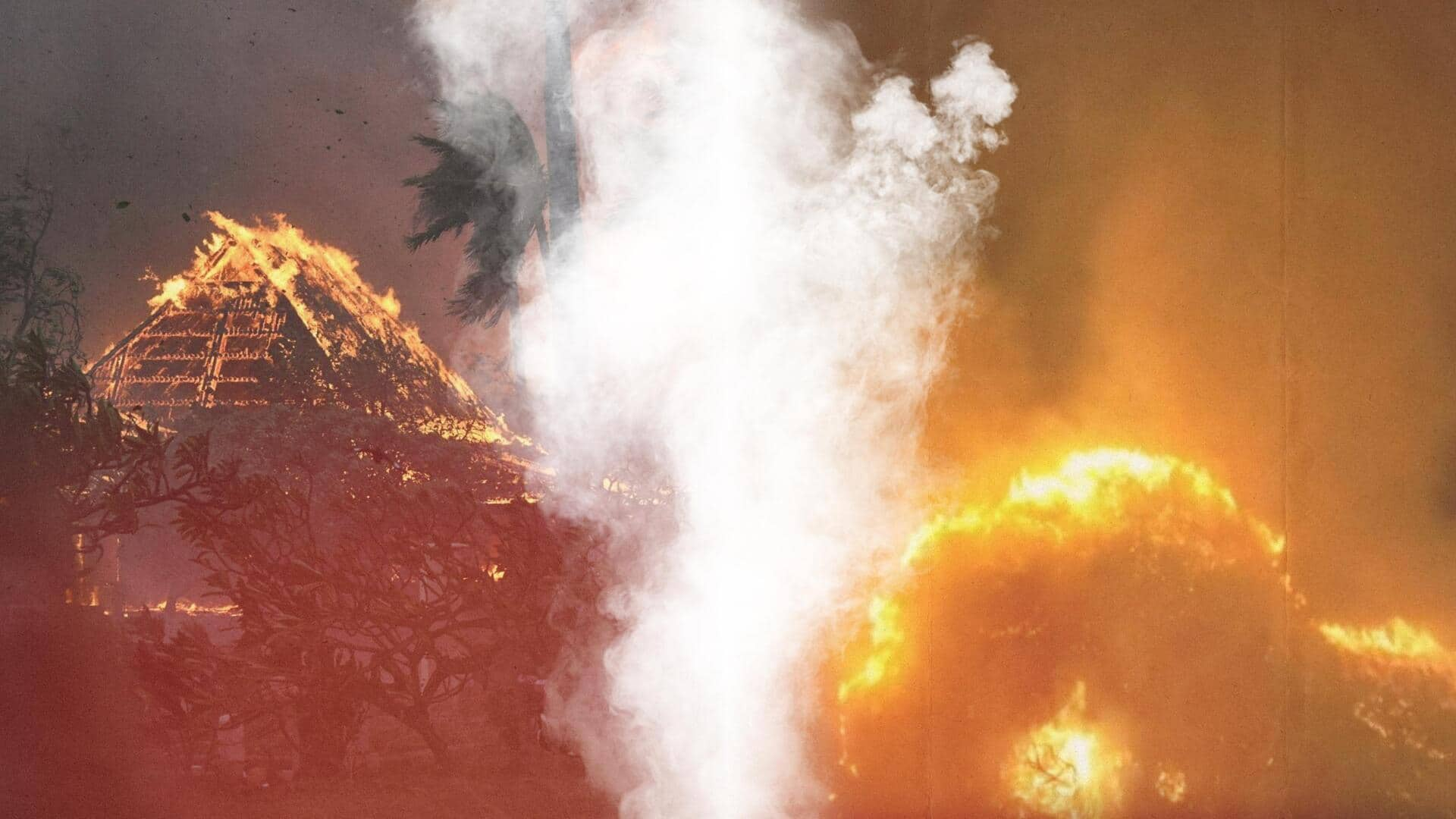
What fueled Maui wildfires
What's the story
The death toll from the devastating wildfires in the Hawaiian island of Maui climbed to 96 on Monday, The Independent reported. The wildfires have now become the deadliest that the United States (US) has seen in over a century. While most fingers are pointed at climate change, and rightly so, let's look at some other factors which have contributed to the inferno significantly.
Cause
Area consumed by wildfires increased 400% in century
Although Hawaii is a group of volcanic islands, wildfires were nice very rare there. Volcanic eruptions and dry lightning mostly caused fires earlier. However, wildfire frequency has increased in recent decades due to heightened human activity, say reports. Notably, the Hawaii Wildfire Management Organization, a nonprofit group, said the average area engulfed by wildfires each year has jumped by 400% in the last century.
Climate change
Climate change making Hawaii drier
Reportedly, most wildfires in the archipelago are sparked by humans. However, the exact cause of the current wildfires is not known. One of the major reasons for the blaze could be that Hawaii is becoming drier due to climate change, thus making it more susceptible to wildfires, Vox reported. Furthermore, the state government said 90% of Hawaii sees less rainfall than a century ago.
Dora
Hurricane Dora's strong winds fanning blaze
It was earlier reported that winds from a faraway hurricane fanned the wildfires. Although Hurricane Dora, churning hundreds of miles offshore in the Pacific Ocean, is not expected to make landfall in Hawaii, it is emanating strong winds which are fuelling the fire. The winds are knocking down trees, reducing accessibility, and making it difficult for firefighters to douse the blaze.
Grass
Highly inflammable non-native grass turned fuel
Another factor could be the introduction of highly flammable invasive species of grass, such as guinea grass and fountain grass native to the African savanna and used as feed for livestock, that has proven to be an enormous fuel for wildfires. These grasses outcompete native grasses and grow incredibly quickly after rainfall. Today, these non-native grasses cover around one-fourth of Hawaii's total land area.
Background
Where colonialism comes into picture
Maui is the second largest island in the Hawaii archipelago. Foreign interest in the archipelago peaked with the growth of the sugar industry in the mid-19th century. The American and European traders colonized it after overthrowing its monarchy. Its importance as a military base and a tourist destination increased in the aftermath of World War II. Subsequently, settler colonizers caused its landscape to change.
Lahaina
Lahaina's water diverted to sugar plantations in early 1900s
Lahaina—one of Maui's prime attractions drawing around 80% of Hawaii's visitors annually—was completely devastated after colonization, say reports. While settlers had turned it into a resort town, it used to be the original capital of the Hawaiian kingdom. Although it's the drier part of Hawaii, its wetlands were reportedly drained, and its water was diverted for irrigating sugar crops in the early 1900s.